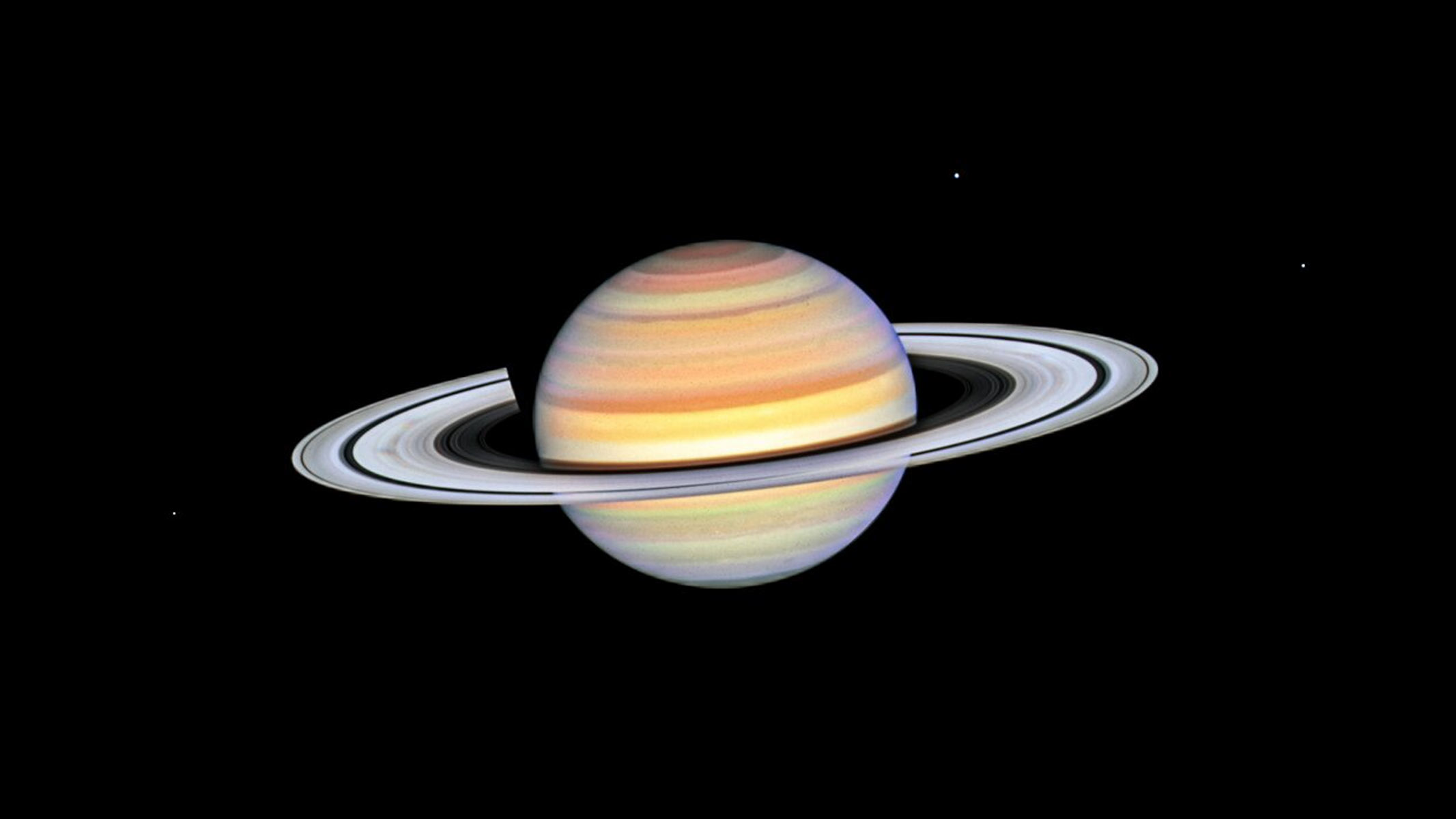Best 'Doctor Who' villains ranked — the best monsters of the new Who era
The most memorable monsters to have tormented the Time Lord over the last 20 years.
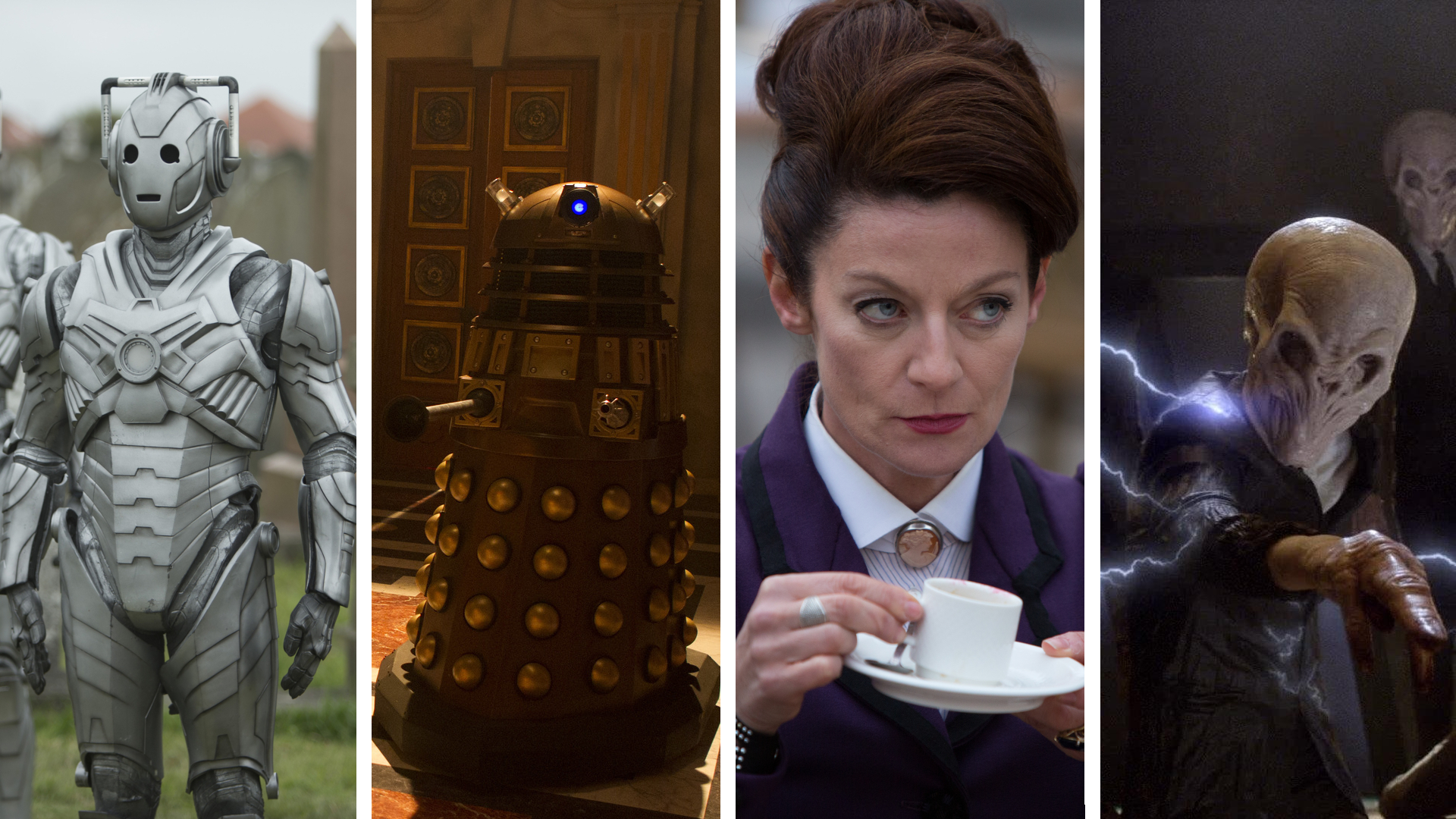
The best "Doctor Who" villains are often the reason we watch the long-running British sci-fi institution. Sure, we fall in love with the Doctor and their companions, but in a show that's effectively a "Twilight Zone"-style anthology series, a story is only as good as its monsters.
Luckily, "Doctor Who"'s rogues' gallery is more than a match for the baddies you'll encounter in "Star Trek", "Star Wars", or any other science fiction franchise. In fact, there have been so many classic antagonists over the last 62 years that we've had to focus this list of the best "Doctor Who" villains on monsters who've appeared since the show's successful 2005 reboot. Even then, we still couldn't find room for the Autons, the Boneless, the Family of Blood, the Great Intelligence, the Ice Warriors, Omega, the Rani, Sutekh, the Veil, or the Zygons.
And before you ask, no, the Daleks' ongoing quest for universal domination isn't quite enough to carry them to the top. Read on to find out how they placed in our guide to "Doctor Who" villains ranked.
15. The Judoon

- First appearance: "Smith and Jones" (2007)
If you're going to have an intergalactic police force, why not make them a bunch of angry space rhinos? Throw in their wonderfully simplistic language (they sound like a group of Klingons clearing their throats), and a Judge Dredd-like passion for upholding the law, and you've got the Judoon.
These alien mercenaries — the militant wing of the intergalactic law-brokers known as the Shadow Proclamation — aren't particularly scary and are a rather silly addition to "Who"'s rogues' gallery, but they're welcome guest stars every time they cross paths with the Doctor.
14. The Silurians
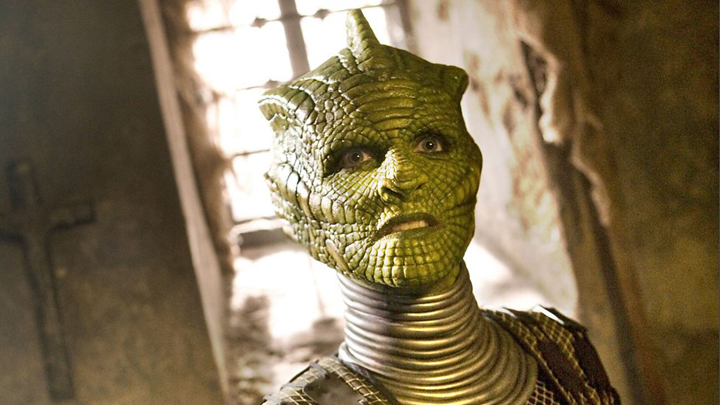
- First appearance (original series): "Doctor Who and the Silurians" (1970)
- First appearance (new series): "The Hungry Earth" (2010)
The Silurians are unique on this list of the best "Doctor Who" villains, seeing as they're not technically aliens at all. Instead, these technologically advanced reptilians were the dominant species on Earth millions of years before humans came along. Once thawed from cryogenic preservation, they decide they'd quite like the planet back.
"The Hungry Earth"/"Cold Blood" two-parter is a worthy reintroduction to these updated original series baddies, as their encounter with the Eleventh Doctor (Matt Smith) gives them more nuance and depth than your average "Who" monster — though the story does end with the tragic death of "Doctor Who" companion Rory Williams (Arthur Darvill). Since then, their most notable appearances have come courtesy of Madame Vastra (Neve McIntosh), the Sherlock Holmes-esque leader of the Paternoster Gang.
Breaking space news, the latest updates on rocket launches, skywatching events and more!
13. The Sontarans
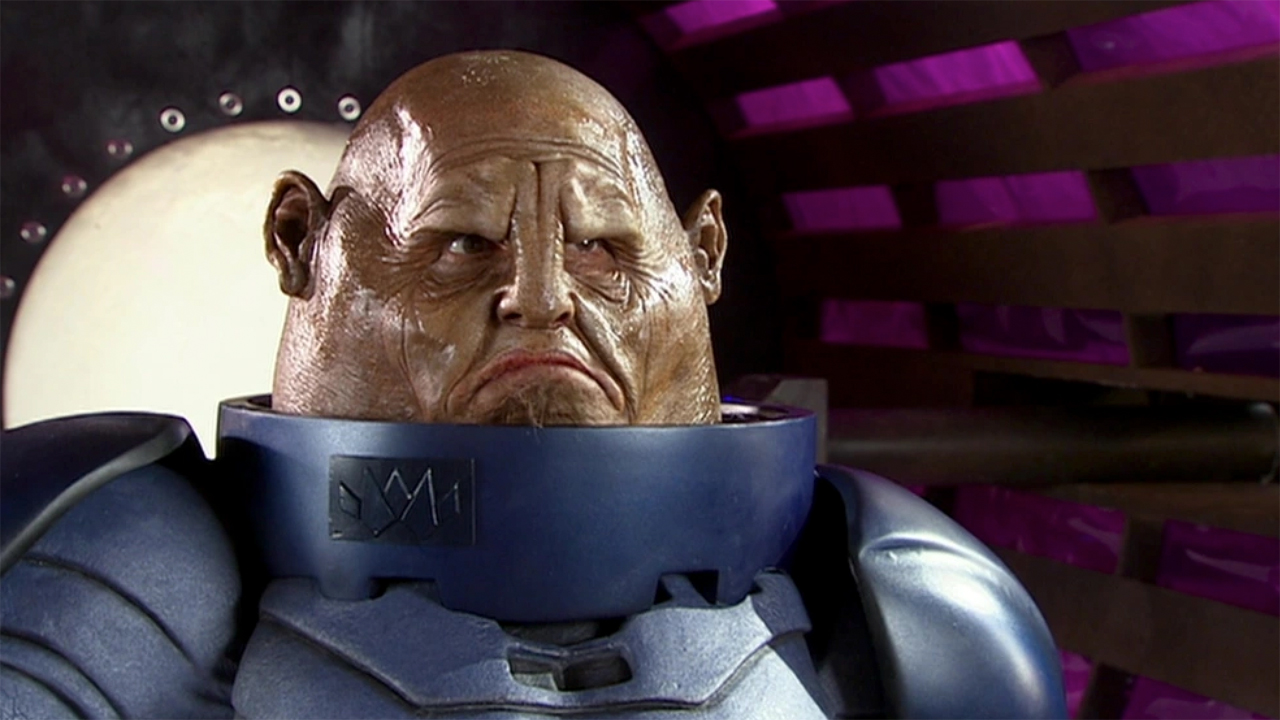
- First appearance (original series): "The Time Warrior" (1973)
- First appearance (new series): "The Sontaran Stratagem" (2008)
After top-tier "Who" villains the Daleks, the Cybermen and the Master had made their inevitable comebacks, the next original series baddies to turn up in the 21st century (unless you count the brief cameo from cosmic crabs the Macra in 2007's "Gridlock") were this battalion of belligerent, militaristic clones.
Since their attempt to turn Earth into a Sontaran breeding planet in "The Sontaran Stratagem"/"The Poison Sky" two-parter they've largely been relegated to supporting players and/or comic relief — though, mainly thanks to Paternoster Gang’s resident butler Strax (Dan Starkey), it's a role they fulfil with commendable honour.
12. The Toymaker
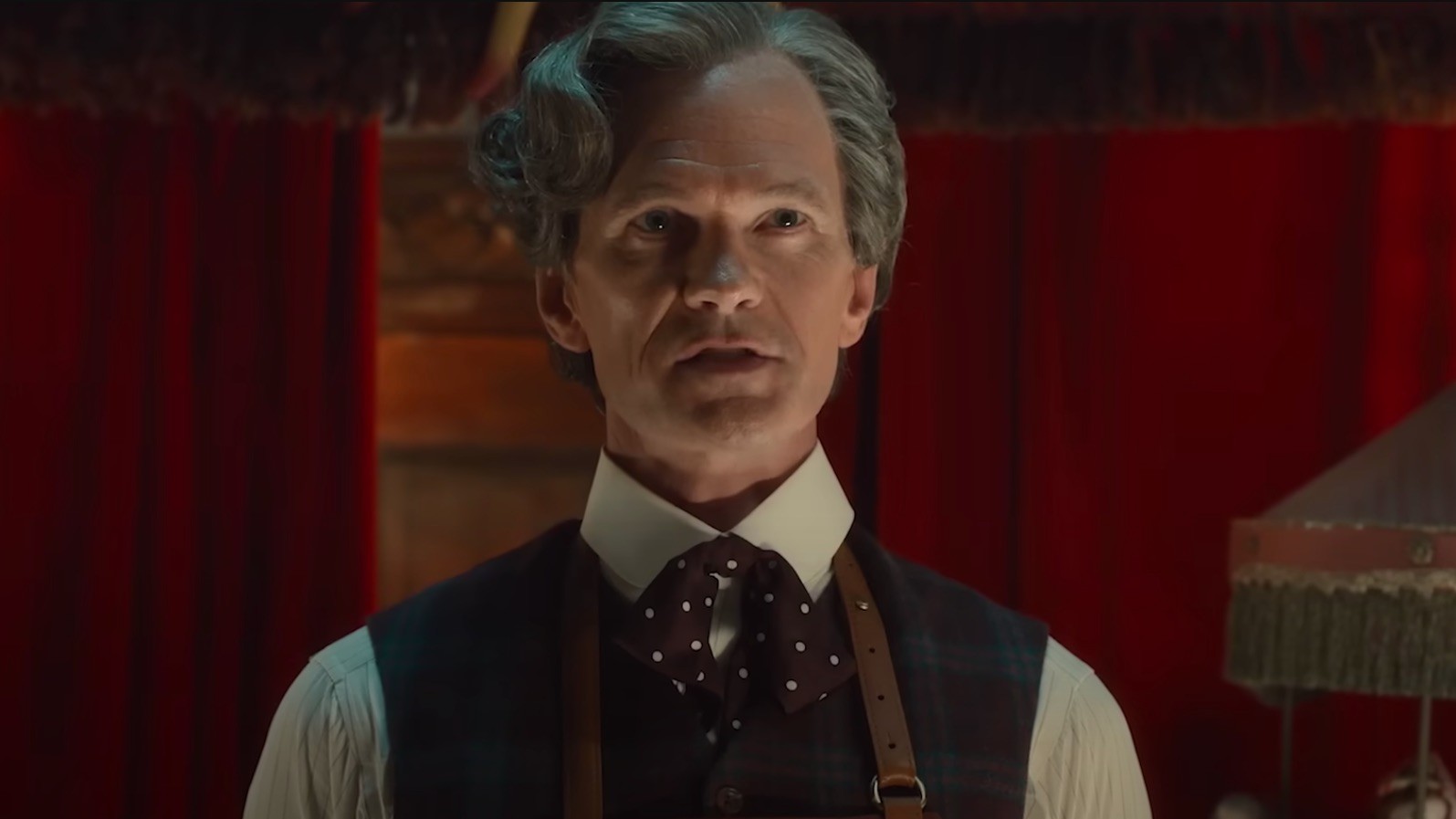
- First appearance (original series): "The Celestial Toymaker" (1966)
- First appearance (new series): "The Giggle" (2023)
Returning "Doctor Who" showrunner Russell T Davies went all the way back to the William Hartnell era to find his antagonist for David Tennant's second final adventure. Originally played by Michael Gough (who went on to play Bruce Wayne's butler, Alfred, in the Tim Burton Batman movies), this reimagined gamesmaster was precision-engineered for guest star Neil Patrick Harris.
He delivers a tour de force performance as a powerful celestial being whose only significant Achilles heel is his insistence on playing by the rules — albeit his own interpretation of them. He's the reason the Fourteenth Doctor is forced to bigenerate, and effectively announces the arrival of the Pantheon of god-like beings (including Maestro, Sutekh and Lux) who become a persistent thorn in the Fifteenth Doctor (Ncuti Gatwa)'s side.
11. The Flood
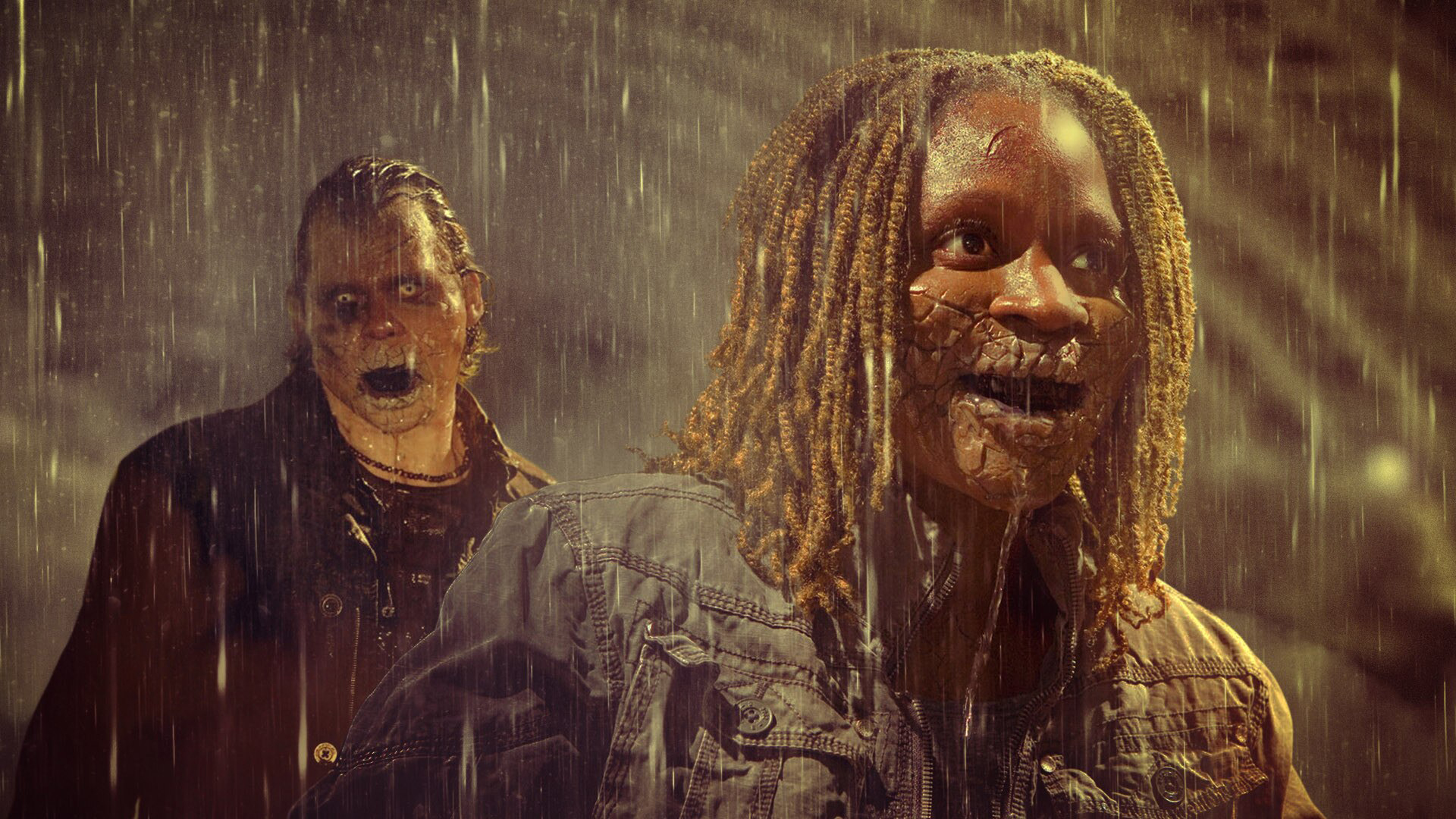
- First appearance: "The Waters of Mars" (2009)
Sometimes the show's one-off antagonists are just as memorable as the recurring villains, and Russell T Davies and co-writer Phil Ford saved a brilliant monster for the Tenth Doctor (David Tennant)'s penultimate adventure. Water is so fundamental to human existence — particularly when you're trapped on a dry, arid planet like Mars — that twisting it into the thing that will kill you proves to be a deliciously cruel act of genius. The Flood's mastery of H2O allows them to transform humans into fast, strong, and very soggy zombies, turning (up)rising damp into the stuff of pre-watershed nightmares.
Not to be confused with Mrs Flood (Anita Dobson), who, as we now know, is actually the renegade Time Lady, the Rani.
10. The Not-Things
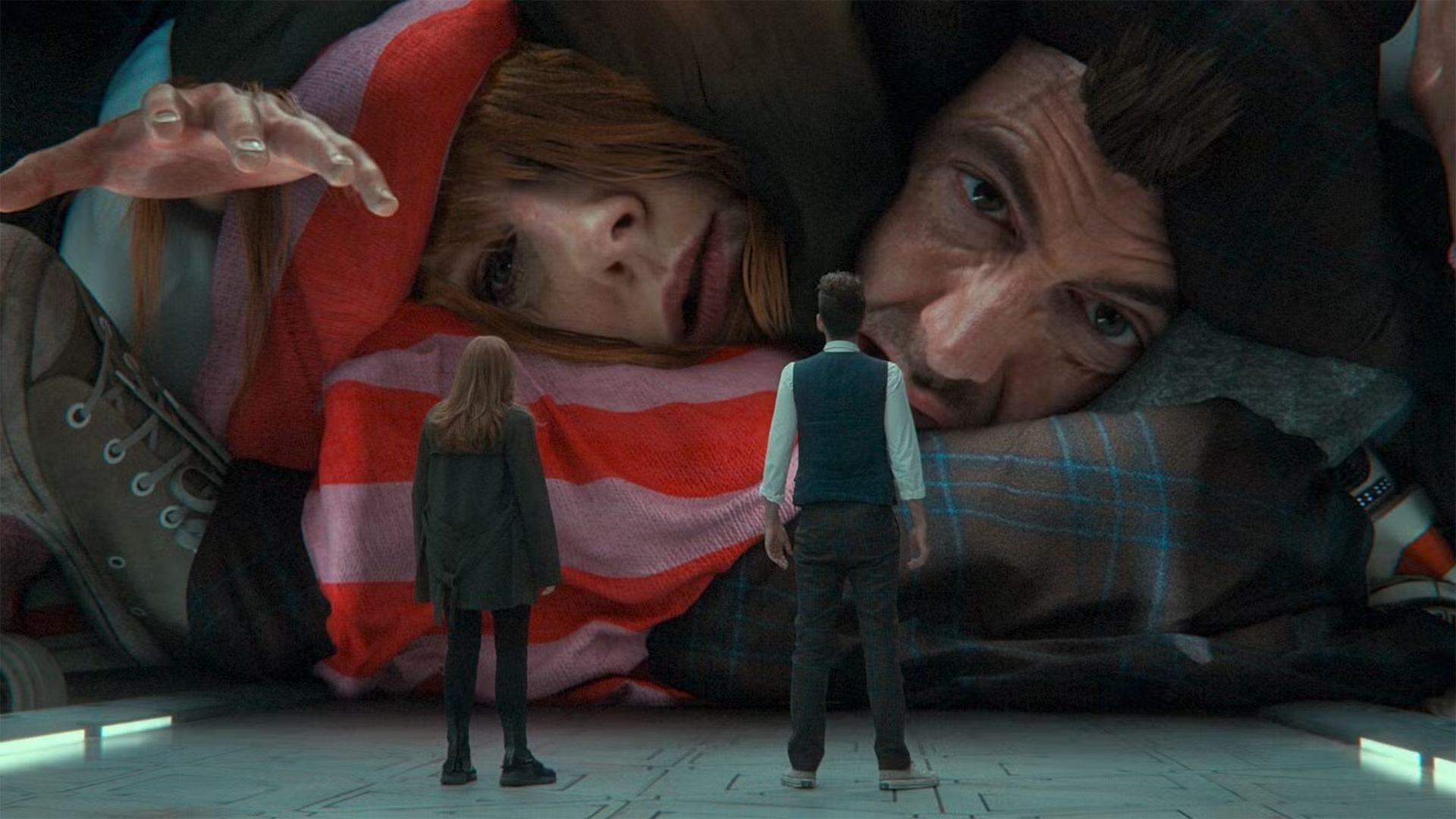
- First appearance: "Wild Blue Yonder" (2023)
As is also the case in "Star Trek", the "Doctor Who" universe is overpopulated with creatures that look and move a lot like people. There have, however, been some notable exceptions, such as the sentient scribble of "Fear Her" (2006) and the two-dimensional Boneless from "Flatline" (2014).
The Not-Things from "Wild Blue Yonder" (the best of the 60th anniversary specials) definitely belong in that same freaky camp. These twisted, not-quite-right caricatures are residents of the Void beyond our universe who clone the Doctor and Donna with the surrealist eye of Salvador Dalí, and steal their memories for good measure. It's safe to say you've never seen the Doctor move as he does in this family-friendly take on body horror.
9. The Silence
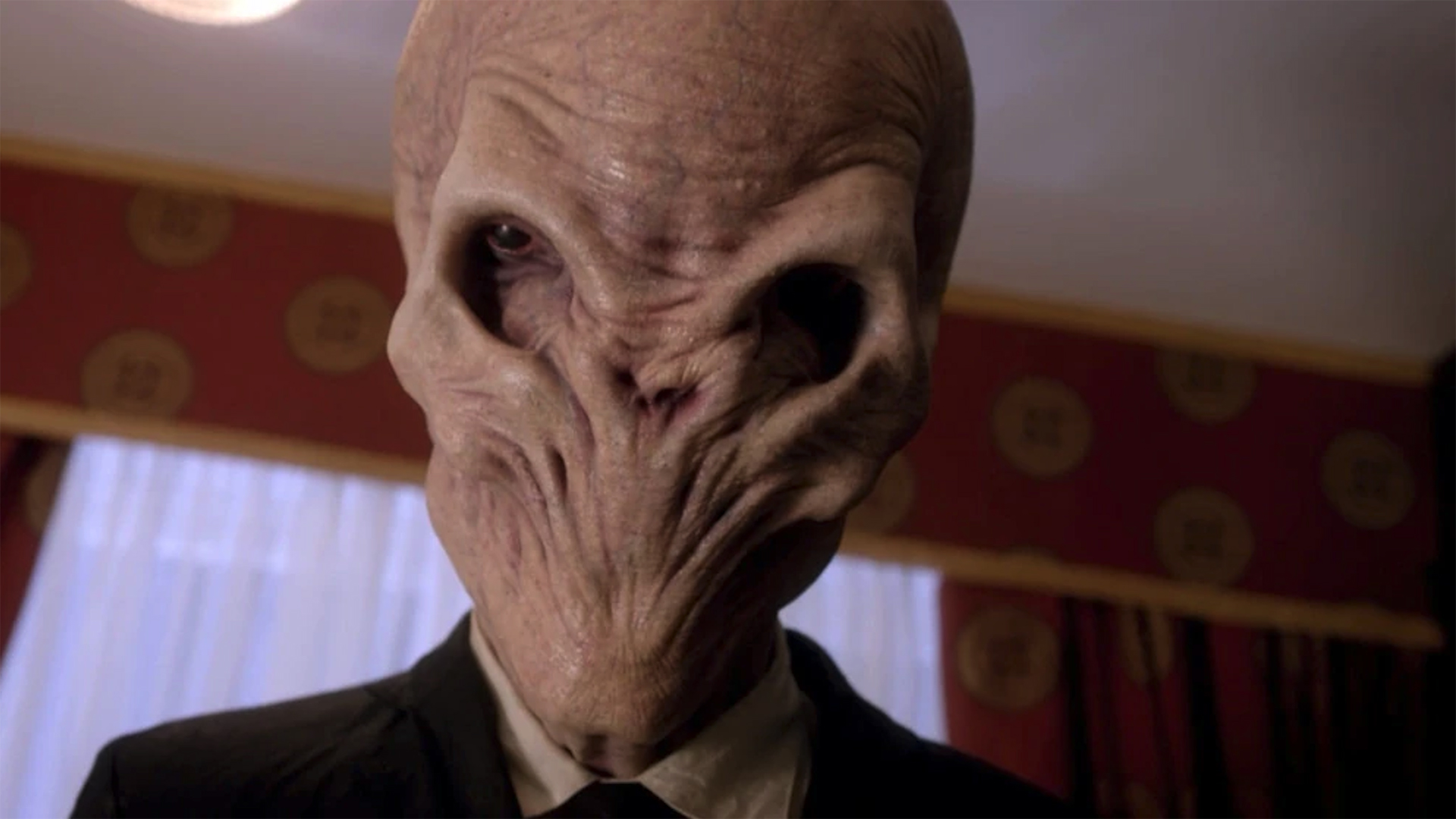
- First appearance: "The Impossible Astronaut" (2011)
Nobody does high-concept "Who" monsters better than former showrunner Steven Moffat, and the public face of the religious order known as the Silence are among the most memorable of the lot. Which is somewhat ironic, seeing as their main skill is making you forget about them as soon as you turn your back on them.
Their creepy blank faces (inspired by Edvard Munch's "The Scream") and "Men in Black" fashion sense mean they're perfectly suited to exploit the paranoia of Richard Nixon's White House during the Apollo era. Unfortunately, however, the nature of their defeat in "Day of the Moon" — a carefully deployed subliminal video of a Silent telling humans they should kill them on sight — makes it extremely difficult for them to mount a comeback.
8. The Vashta Nerada
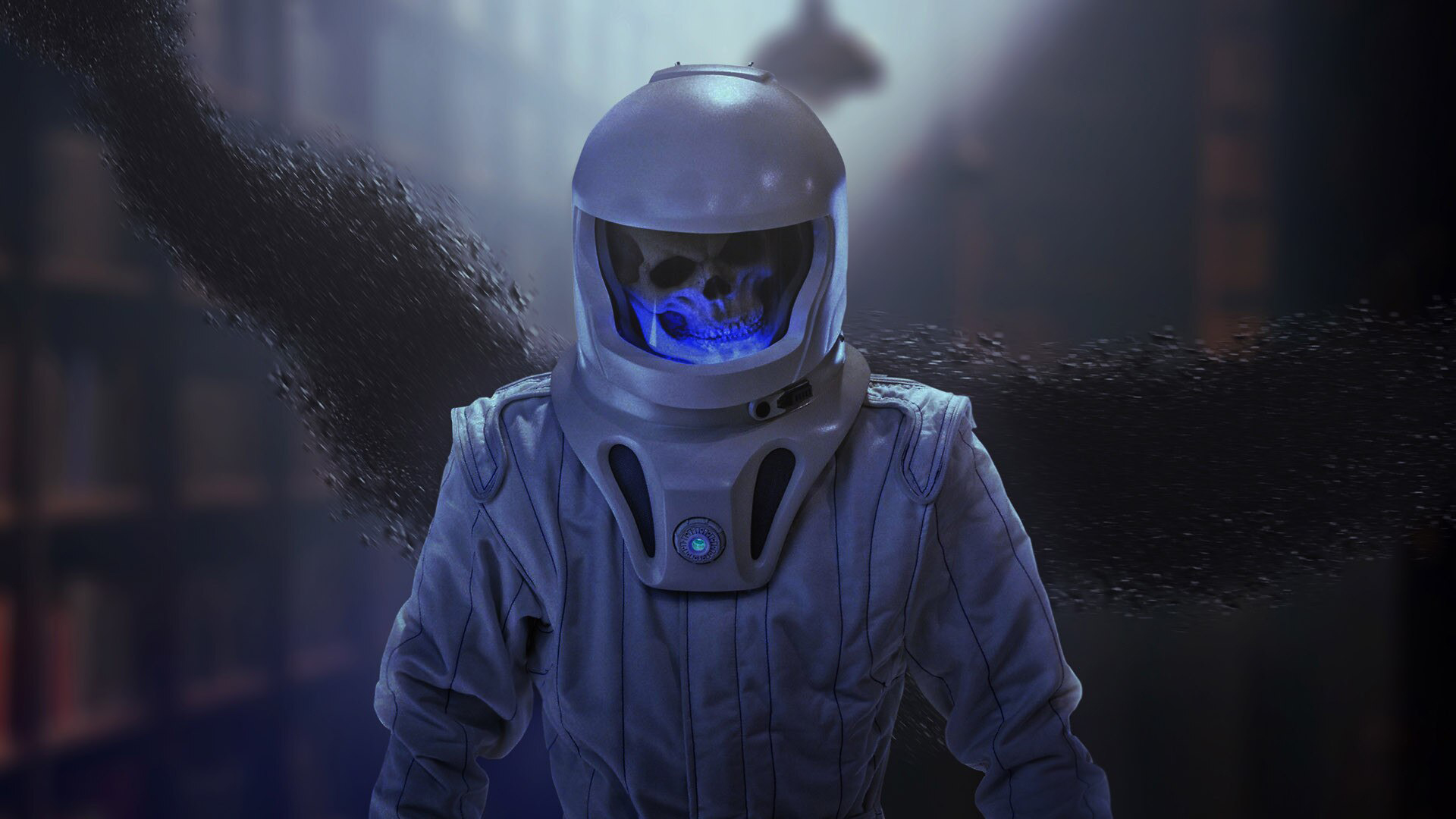
- First appearance: "Silence in the Library" (2008)
Another brilliant Moffat creation, the Vashta Nerada are the definition of strength in numbers. On their own, these microscopic organisms pose minimal threat, but when they swarm, they become "Doctor Who"'s answer to the monsters in "Pitch Black", devouring anyone foolish enough to step out of the light. According to the Doctor, they're the reason most civilisations have an irrational fear of the dark that may not be so irrational after all.
By the time you spot the telltale second shadow at your feet, it's probably too late, as the Vashta Nerada's piranha-like ability to strip a human to its bones — and subsequently possess their vacant spacesuit — makes them a truly lethal foe. The fact that their spores reside in books may have also turned a generation of kids off reading.
7. The Empty Child
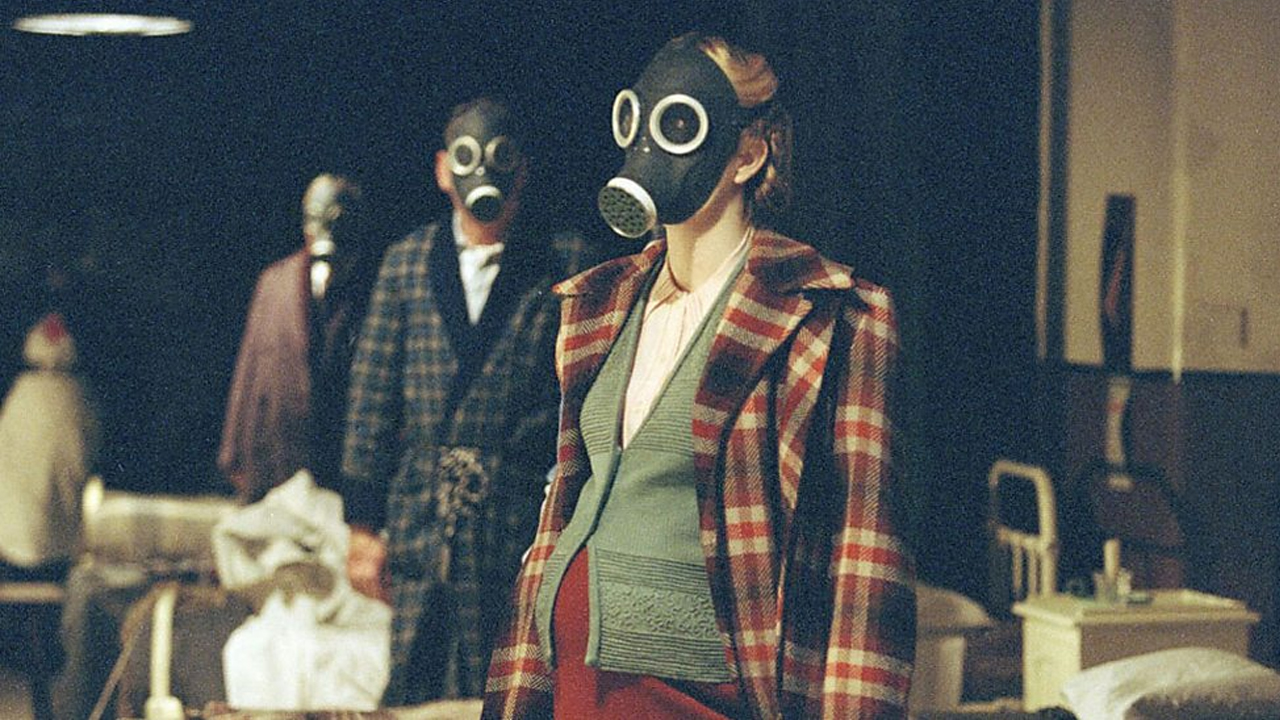
- First appearance: "The Empty Child" (2005)
The first great newbie of the rebooted "Who" is another Moffat creation. The Empty Child is based around a great visual, as a kid with a gas mask for a face wanders around Blitz-era London asking, "Are you my mummy?" He can also cast his voice through radio speakers and absorb anyone he touches into his gas mask-faced hive mind.
That said, the inclusion of the Empty Child on this list of the best "Doctor Who" villains is rather misleading, seeing as he's actually an ordinary boy resurrected by well-meaning Chula nanogenes — they've remodelled his face as protective equipment because they don't know any different. Luckily, as the Doctor is keen to remind everyone, this is one TARDIS adventure where "everybody lives".
6. The Cybermen
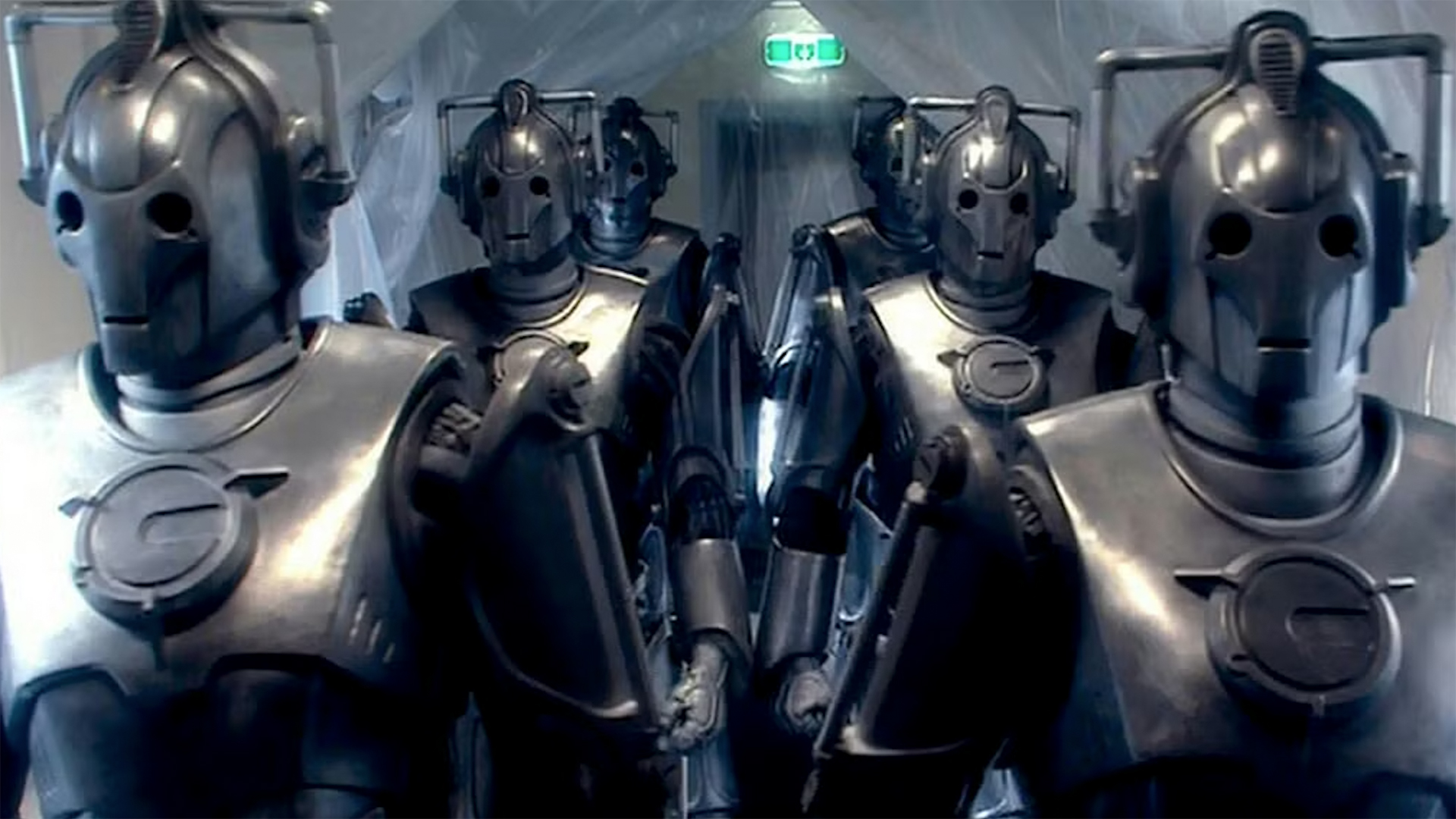
- First appearance (original series): "The Tenth Planet" (1966)
- First appearance (new series): "Rise of the Cybermen" (2006)
The first of the "Big Three" to appear on our list of the best "Doctor Who" villains. By the time they time they returned in the "Rise of the Cybermen"/"The Age of Steel" two-parter, some of the Cybermen's thunder had undoubtedly been stolen by "Star Trek"'s similarly motivated Borg. They did, however, have upgraded costumes and a reinvented origin story, coming into existence on an alternative version of Earth rather than its twin planet, Mondas.
They cemented their return in season two finale "Army of Ghosts"/"Doomsday", but some less impressive appearances since ("The Next Doctor", "Nightmare in Silver") have taken some of the shine off their armour. That said, the welcome comeback of the Mondasian Cybermen for the Twelfth Doctor's regeneration story did make them scary again — not least for the terrifying transformation of companion Bill Potts (Pearl Mackie).
5. The Daleks
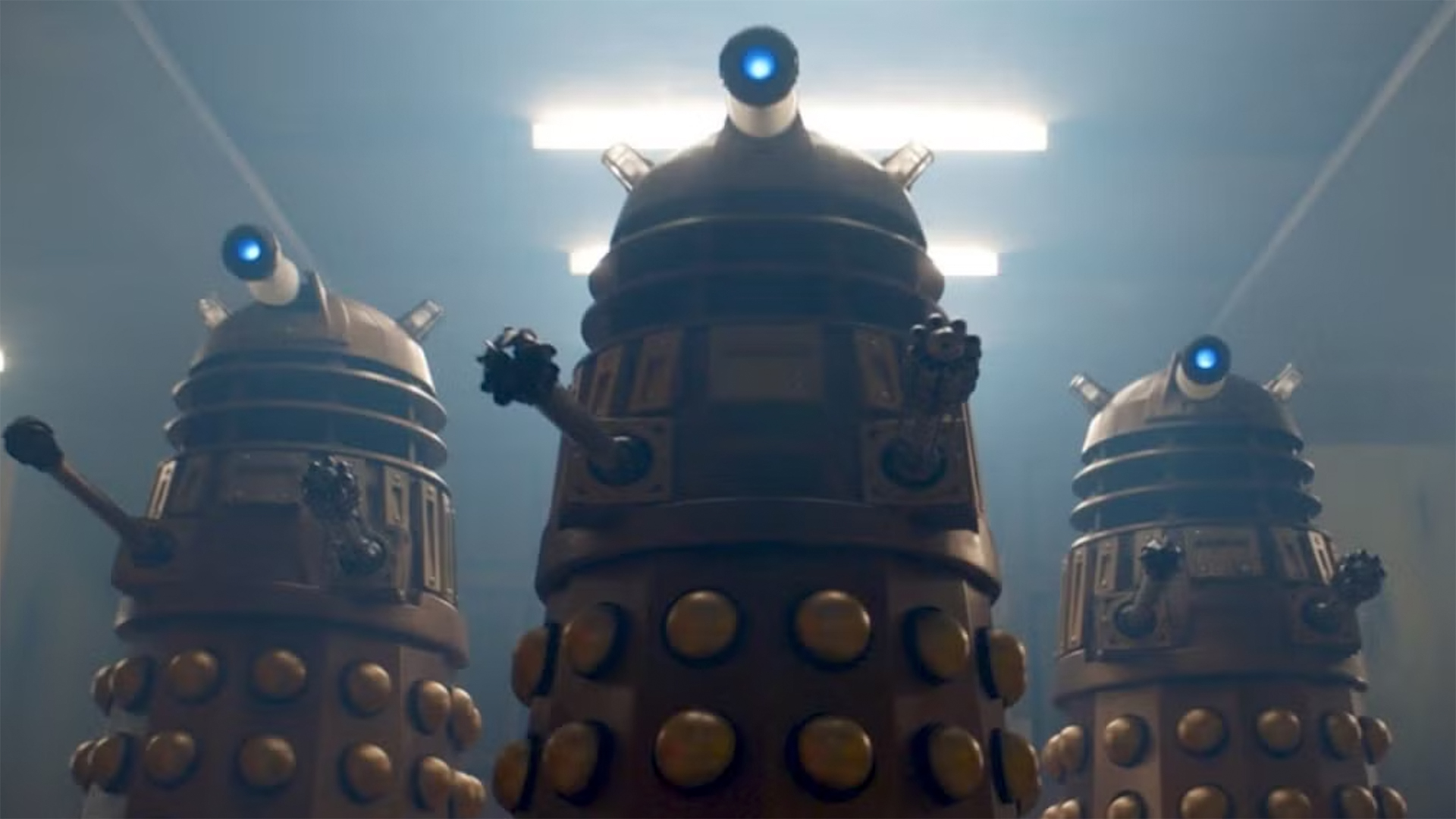
- First appearance (original series): "The Daleks" (1963)
- First appearance (new series): "Dalek" (2005)
Skaro's most famous exports don't make our top spot for the reboot era, despite being the most iconic of all the Doctor's adversaries, who've faced every incarnation of the Time Lord except Paul McGann's and Ncuti Gatwa's. The shouty pepperpots' new "Who" debut, 2005's "Dalek", was a spectacular reminder of why they remain among the most feared creatures in the galaxy, while the bronze look they've been sporting for most of the last two decades confirms their status as a '60s design classic.
But Davros's creations have been rolled out so many times since — usually defeated with considerable ease — that their power to scare has been somewhat exterminated. Indeed, the fact that they've been out of action since 2022's "The Power of the Doctor" is arguably a good thing, giving them time to regroup before they terrorize the Doctor once again.
4. The Master/Missy
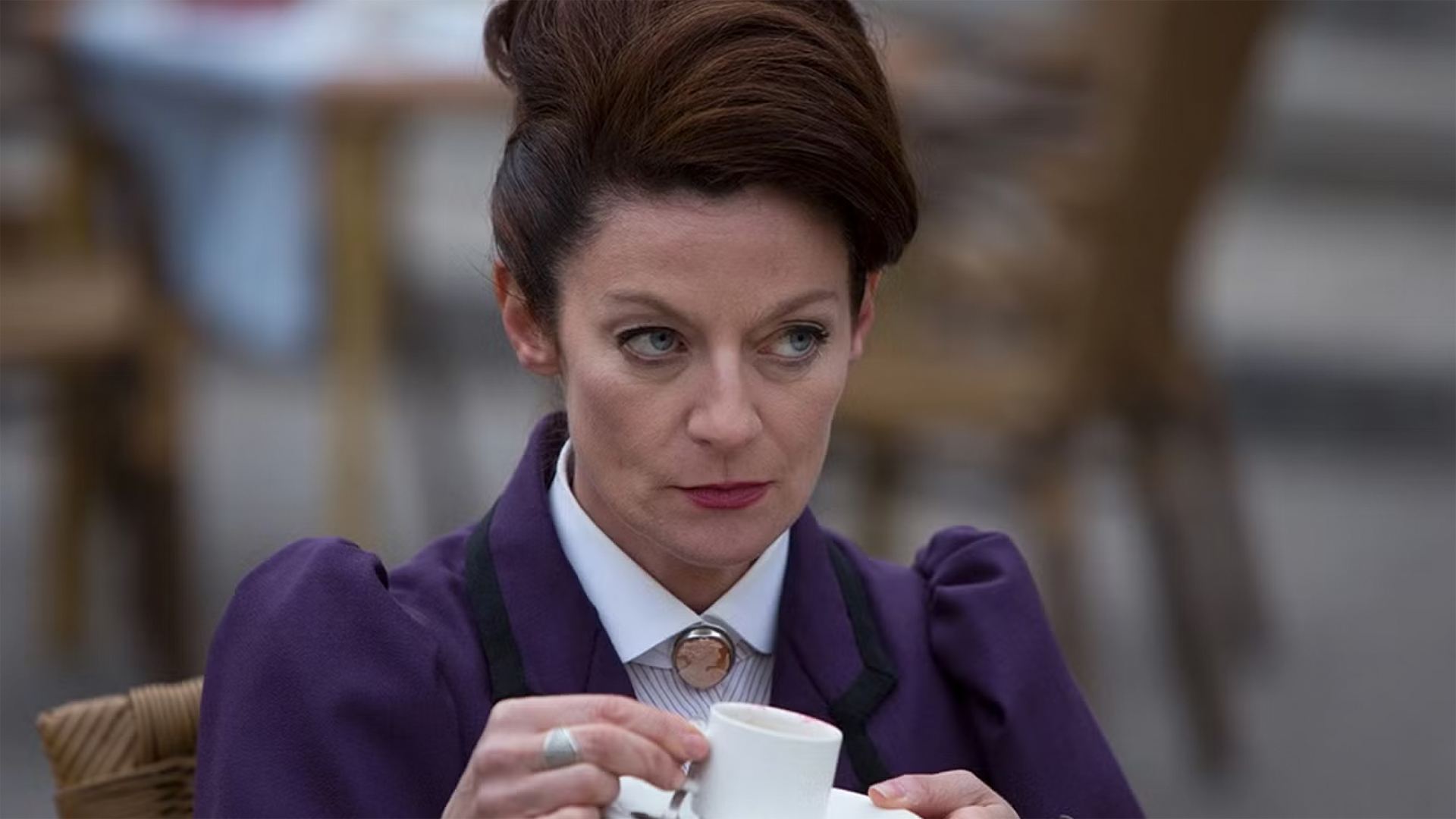
- First appearance (original series): "Terror of the Autons" (1971)
- First appearance (new series): "Utopia" (2007)
The Doctor thought he was the Last of the Time Lords until it turned out kindly Professor Yana (Derek Jacobi) was actually his old foe, the Master, hiding in plain sight courtesy of a chameleon arch. Within moments, he'd regenerated into John Simm, who — along with his successors Michelle Gomez and Sacha Dhawan — made being evil look an awful lot of fun.
Along the way, they've been elected prime minister, turned the entire Earth's population into facsimiles of themselves, used the deceased to create a new race of Cybermen, and — while masquerading as Rasputin — taunted the Doctor via the medium of Boney M.
This appetite for reinvention makes the Master/Missy the most successful of the show's classic villains in the new "Who" era, and they could live to fight again. The last thing we knew, they were trapped in the Toymaker's gold tooth…
3. The Beast

- First appearance: "The Impossible Planet" (2006)
Nobody's claiming "Doctor Who" invented the devil, but season two's reinvention of the prince of darkness is outstanding. Indeed, while the Pantheon of gods has come to the fore in the show's most recent seasons, none of them can hold a candle to this truly chilling incarnation of the Beast.
For any other entity, a purpose built prison on a world orbiting a black hole might feel like overkill, but here the dark lord (or whatever it truly is) more than justifies the hype — particularly when it starts to possess the unfortunate residents of a base on this impossible planet, not to mention their helpful servants, the Ood.
This two-parter never explicitly states that the Doctor and Rose Tyler have met Satan, but it suggests this terrifying creature could be the origin of an awful lot of myths.
2. The Midnight entity
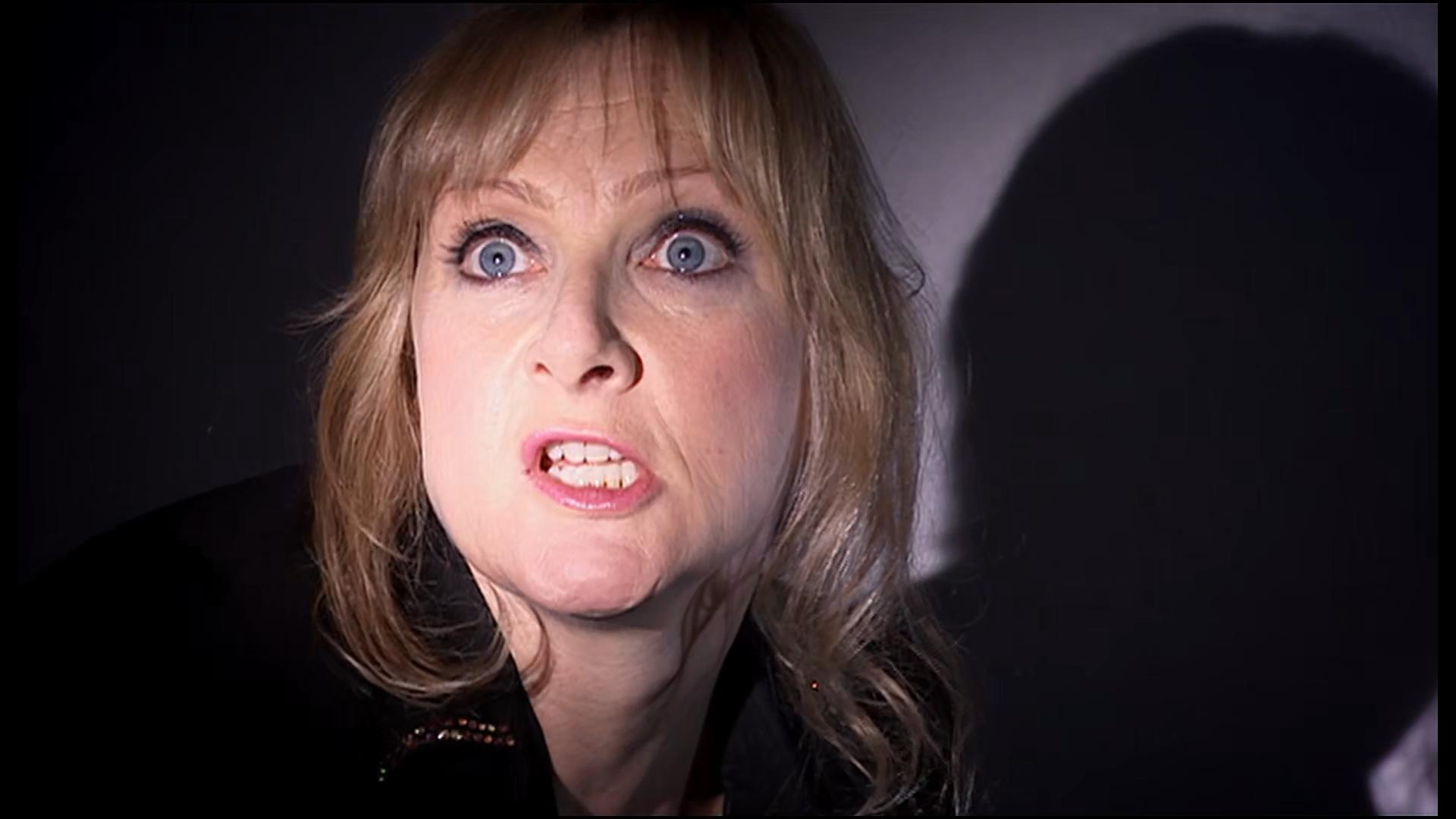
- First appearance: "Midnight" (2008)
A one-set bottle episode isn't the first place you'd expect to encounter one of the best "Doctor Who" monsters but "Midnight" (written by showrunner Russell T Davies) is a masterclass in emphasising the stuff you don't see.
The Tenth Doctor's coach tour of a diamond-encrusted planet known as "Midnight" is derailed when a mysterious entity finds its way on board. It quickly possesses fellow passenger Sky Silvestry (Lesley Sharp), and its subsequent back-and-forth with the Doctor reveals a malevolent intelligence capable of learning about its surroundings — and adversaries — at alarming speed. Although it never shows its face, it's more than a match for the Doctor, and if a brave cabin attendant (Rakie Ayola) hadn't sacrificed herself to save the day, the Time Lord might not be here now.
An evolution of the creepy-as-hell Midnight creature recently tormented the Fifteenth Doctor in "The Well".
1. The Weeping Angels
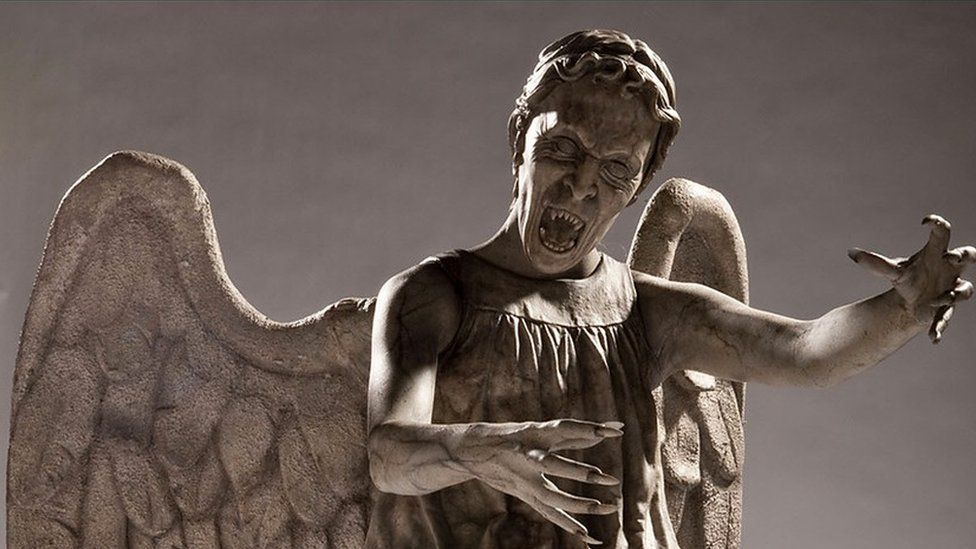
- First appearance: "Blink" (2007)
"Doctor Who" is renowned for making people hide behind the sofa but, if you ever come face-to-face with our chart toppers, that would be a really bad idea. Introduced in the Doctor-lite classic "Blink" (2007), these statue-like creatures have a handy defence mechanism — their quantum-locked status means they can only move when they're not being observed. But escaping a Weeping Angel is trickier than initially meets the eye, seeing as the blink of an eye or a flickering light could be all they need to catch you, send you back in time, and feast on the tasty temporal energy you leave behind.
Subsequent appearances have expanded their skillset and arguably diminished their mystique, but Moffat's greatest creation remain the most enduring, most iconic villains of the new "Who" era. The montage of statues at the end of "Blink" is also a moment of nightmare-inducing wonder — how many kids of the '00s still give monuments a wide berth?
Every "Doctor Who" episode of the post-2005 era is available on BBC iPlayer in the UK. In the US, the Ninth, Tenth, Eleventh, Twelfth and Thirteenth Doctor seasons are available on Max, while you can watch the Fourteenth and Fifteenth Doctor's adventures on Disney+.

Richard's love affair with outer space started when he saw the original "Star Wars" on TV aged four, and he spent much of the ’90s watching "Star Trek”, "Babylon 5” and “The X-Files" with his mum. After studying physics at university, he became a journalist, swapped science fact for science fiction, and hit the jackpot when he joined the team at SFX, the UK's biggest sci-fi and fantasy magazine. He liked it so much he stayed there for 12 years, four of them as editor.
He's since gone freelance and passes his time writing about "Star Wars", "Star Trek" and superheroes for the likes of SFX, Total Film, TechRadar and GamesRadar+. He has met five Doctors, two Starfleet captains and one Luke Skywalker, and once sat in the cockpit of "Red Dwarf"'s Starbug.
You must confirm your public display name before commenting
Please logout and then login again, you will then be prompted to enter your display name.
